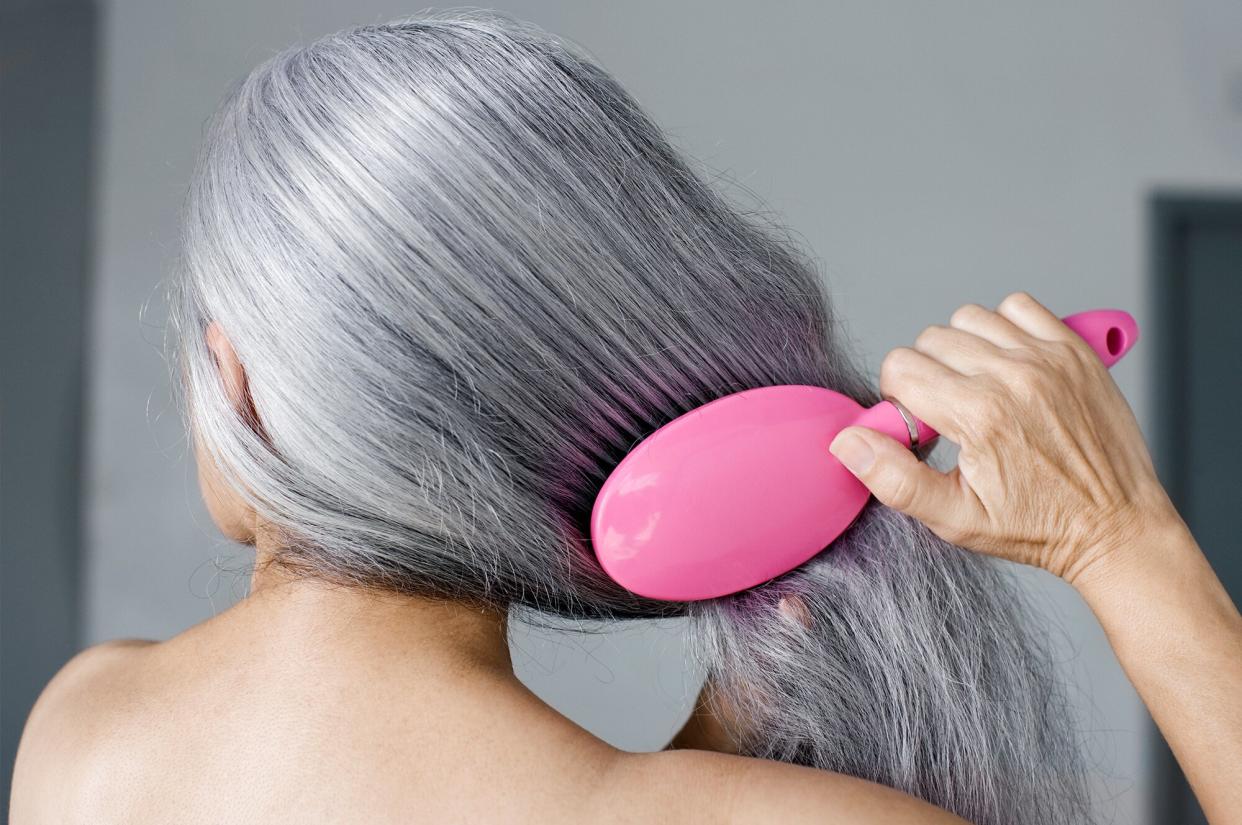How to Brush Your Hair the Right Way, According to Stylists

Patrik Giardino / Getty Images
Brushing your hair requires some finesse: Although it may appear to be as simple as running a brush through your strands, there are several techniques, products, and tools that, when employed correctly, can prevent breakage, split ends, and frizz. Read on for tips on exactly how to brush out your hair (without pain, damage, or tangles!), according to top stylists.
Related: The Best Brushes for Your Hair Type
Choose the right brush
Selecting the correct brush for your hair goals is critical: Pick wrong, and you'll end up with tangles and knots. A boar bristle brush, for example, smooths strands and lays down flyaways, notes LeAna McKnight, a celebrity hairstylist and founder of SL Raw Virgin Hair; it shouldn't, however, be used on wet hair. Paddle or Denman brushes, on the other hand, are great for detangling, but less suited for styling. Ultimately, the one you use should depend on the texture and strength of your hair. Thicker textures, for example, will require a strong brush, notes Carolyn Aronson, the CEO of It's A 10 Haircare. "If your hair is fine and easily breaks, use a soft bristle brush, instead," she adds.
Create a brushing routine you'll stick to
According to Brittany Johnson, a licensed hairstylist and senior content manager for Mayvenn, it's important to have a set game plan when you brush your strands. "Divide hair into four sections and clip up the ones you aren't working on," she instructs. This will save you time and effort, while also allowing you to detangle your strands completely. Micha Brown, a celebrity hair stylist and owner of Press and Curl Bar Salon, says to add a styling cream or oil before you begin to brush to provide moisture and minimize breakage. Then, starting at the ends, work your way up. "I've seen people rip and rush through their hair from top to bottom, which only leads to unnecessary breakage," Johnson warns.
Avoid over-brushing, which can result in shedding, breakage, and thin patches. The opposite is also harmful: Brown says to avoid going days without brushing your hair; do not allow it to become matted or tangled.
Determine when to brush: wet or dry?
Hair brushing techniques do vary by hair type and texture, says Johnson. Those with tighter curls and coils, for example, should avoid dry brushing entirely. Instead, "start by finger detangling, then move on to a wide-tooth comb or detangling brush," she says. Those with straighter textures or relaxed hair, however, should always brush when strands are dry, says Mcknight, noting that fine and naturally straight hair is delicate and shouldn't be manipulated while wet (when hair is most vulnerable to damage).

